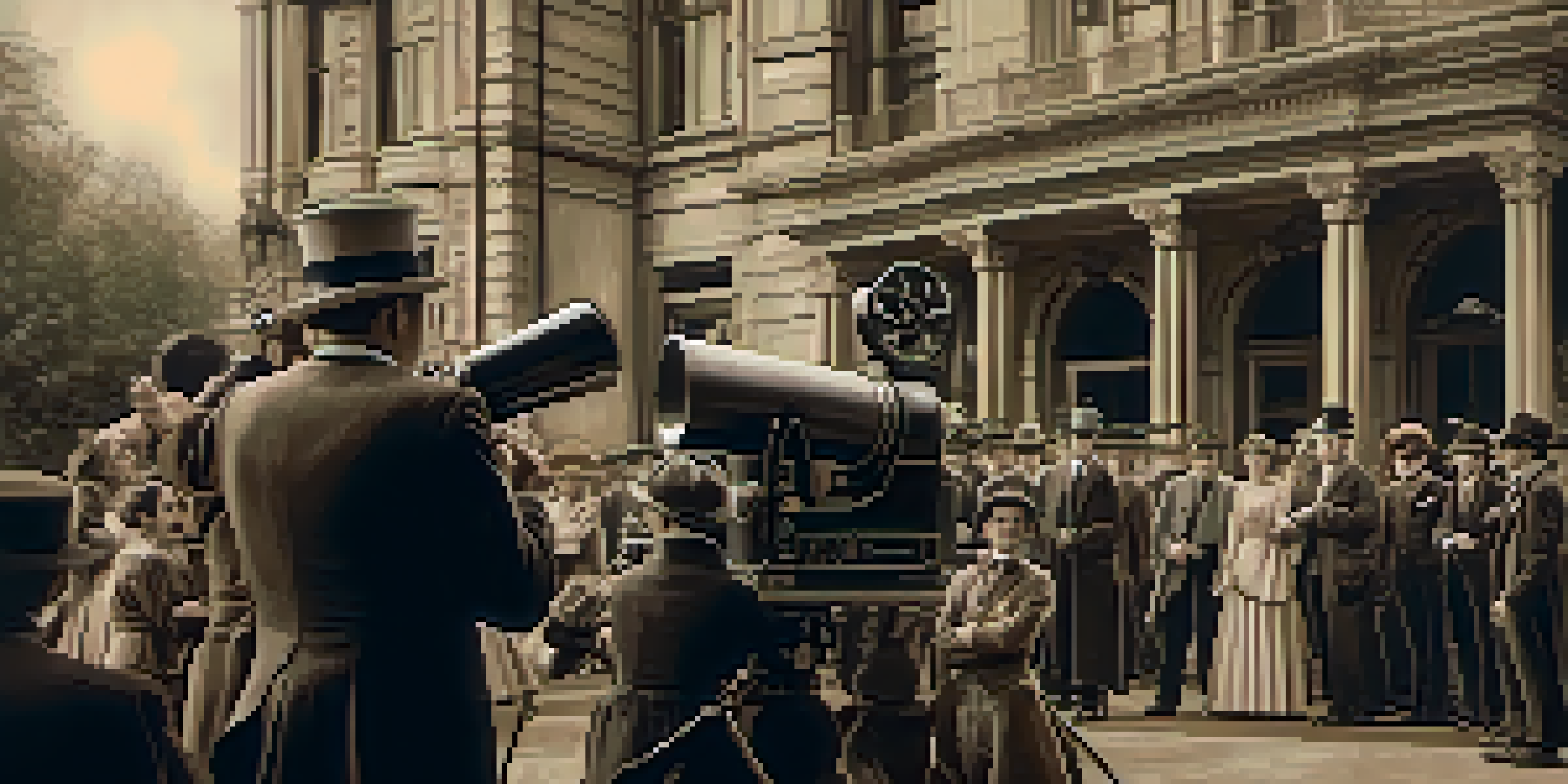The Evolution of Film Adaptations of Classic Literature

The Early Days of Film Adaptations
Film adaptations have been around almost as long as cinema itself. The silent film era saw many literary classics being translated to the big screen, often in a very literal way. For example, in 1902, Georges Méliès adapted Charles Dickens' 'A Christmas Carol,' showcasing the potential of storytelling through film. These early adaptations laid the groundwork for how literature could be visually interpreted, though they often lacked the depth of the original texts.
The Golden Age of Hollywood and Literature
During the 1930s and 1940s, Hollywood embraced classic literature, producing lavish adaptations that drew significant audiences. Films like 'Gone with the Wind' and 'The Great Gatsby' not only highlighted the stories but also transformed them into cultural phenomena. These adaptations featured grand sets and star-studded casts, making literature accessible to those who may not have read the books. However, these films often prioritized entertainment over fidelity, which sparked discussions about the essence of adaptation.
Evolution of Film Adaptations
Film adaptations have transformed from literal translations of literary works to creative interpretations that engage modern audiences.
The Rise of Artistic Interpretation
The 1960s through the 1980s saw a shift in how filmmakers approached adaptations. Directors began to experiment with narrative structures and visual storytelling, often reinterpreting texts in creative ways. Take, for example, the 1974 version of 'The Great Gatsby,' which infused a contemporary feel into Fitzgerald's classic. This era marked a departure from strict adherence to source material, allowing for a richer exploration of themes and characters.
Modern Adaptations: Diversity and Inclusion
In recent years, there has been a growing focus on diversity and inclusion in film adaptations. This shift is evident in adaptations that offer fresh perspectives on classic texts, such as the recent film 'Little Women,' which highlighted the voices of its female characters. By reexamining narratives through different cultural lenses, filmmakers can breathe new life into beloved stories. This evolution acknowledges the importance of representation and expands the audience's understanding of classic literature.
Diversity and Inclusion in Adaptations
Recent adaptations emphasize diverse perspectives, reexamining classic texts to highlight underrepresented voices and themes.
The Impact of Technology on Adaptations
Advances in technology have revolutionized how classic literature is adapted into film. With CGI and advanced animation, filmmakers can bring fantastical elements to life in ways that were once unimaginable. For instance, the 2010 adaptation of 'Alice in Wonderland' utilized cutting-edge visuals to create a vibrant, immersive world. This technological progress offers new opportunities for storytelling, allowing classic tales to resonate with modern audiences.
The Role of Streaming Services in Adaptation
The rise of streaming services has drastically changed the landscape of film adaptations. Platforms like Netflix and Amazon Prime are not only producing adaptations but are also allowing for longer formats, such as miniseries. This shift enables filmmakers to delve deeper into the source material, as seen in the acclaimed adaptation of 'The Queen's Gambit,' which expanded on the novel's themes and characters. Streaming services are thus providing a new avenue for storytelling, making literature more accessible.
Technology's Impact on Storytelling
Advancements in technology, like CGI, have enhanced filmmakers' ability to create immersive worlds, revitalizing classic literature for contemporary viewers.
Challenges Facing Film Adaptations Today
Despite the evolution of adaptations, filmmakers still face significant challenges. One of the biggest hurdles is balancing fidelity to the original text with the need to engage modern audiences. Adaptations like 'The Handmaid's Tale' successfully navigated this, enhancing the original story's themes while making it relevant to contemporary viewers. Striking this balance is crucial, as it determines whether the adaptation resonates or falls flat with its audience.
The Future of Classic Literature in Film
Looking ahead, the future of film adaptations of classic literature remains bright but uncertain. As societal values shift, so too will the ways in which stories are interpreted and told. New voices and perspectives will continue to emerge, offering fresh takes on timeless tales. The ongoing dialogue between literature and film ensures that classic stories will evolve, inviting new generations to engage with them in meaningful ways.